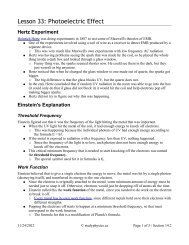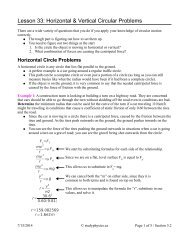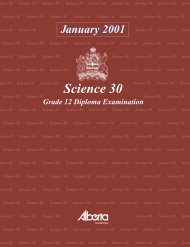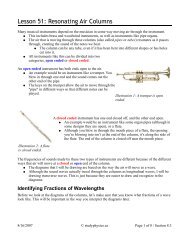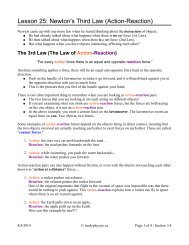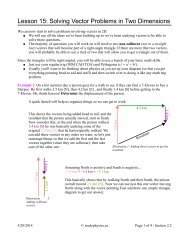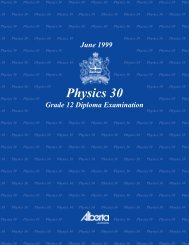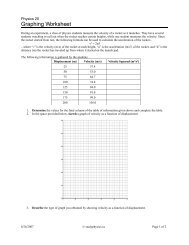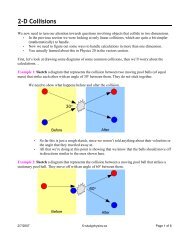Lesson 35: Compton Effect
Lesson 35: Compton Effect
Lesson 35: Compton Effect
Create successful ePaper yourself
Turn your PDF publications into a flip-book with our unique Google optimized e-Paper software.
●Instead, <strong>Compton</strong> found that the x-rays scattered after hitting the target, changing the directionthey were moving and actually getting a longer wavelength.○ Remember, longer wavelength means smaller frequency.○ Since E = hf, the scattered photons had less energy! Somehow, the x-ray photons werelosing energy going through the graphite. So where'd the energy go?<strong>Compton</strong> found that electrons were being thrown off the target at an angle.● <strong>Compton</strong> was able to explain all he was seeing (which became known as the <strong>Compton</strong> <strong>Effect</strong>)by using○ The conservation of energy (the energy the photon lost had to go somewhere).○ The photon theory of light (to figure out the momentum of the photons).○ The conservation of momentum (to explain the angles things were shooting off at).scattered x-rays withlonger wavelengthincident x-rays withsmall wavelengthgraphiteIllustration 2: What <strong>Compton</strong> actually observed.ejectedelectronIf we looked at this in terms of momentum, we'd need to be careful about using the correct momentumequations for each part.● Incident x-raysThe original x-rays have a small wavelength, and the formula p= h it has a lot of momentum.shows us that this means●Scattered x-raysThe x-rays that made it through have a bigger wavelength, so p= h momentum.means it has less●Ejected electronsWe would calculate the electron's momentum using a classic p=mv calculation.11/24/2012 © studyphysics.ca Page 2 of 4 / Section 14.3



